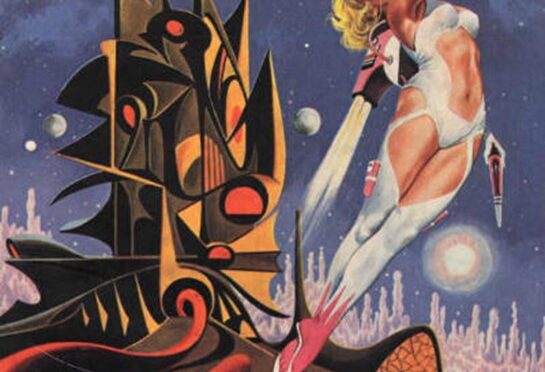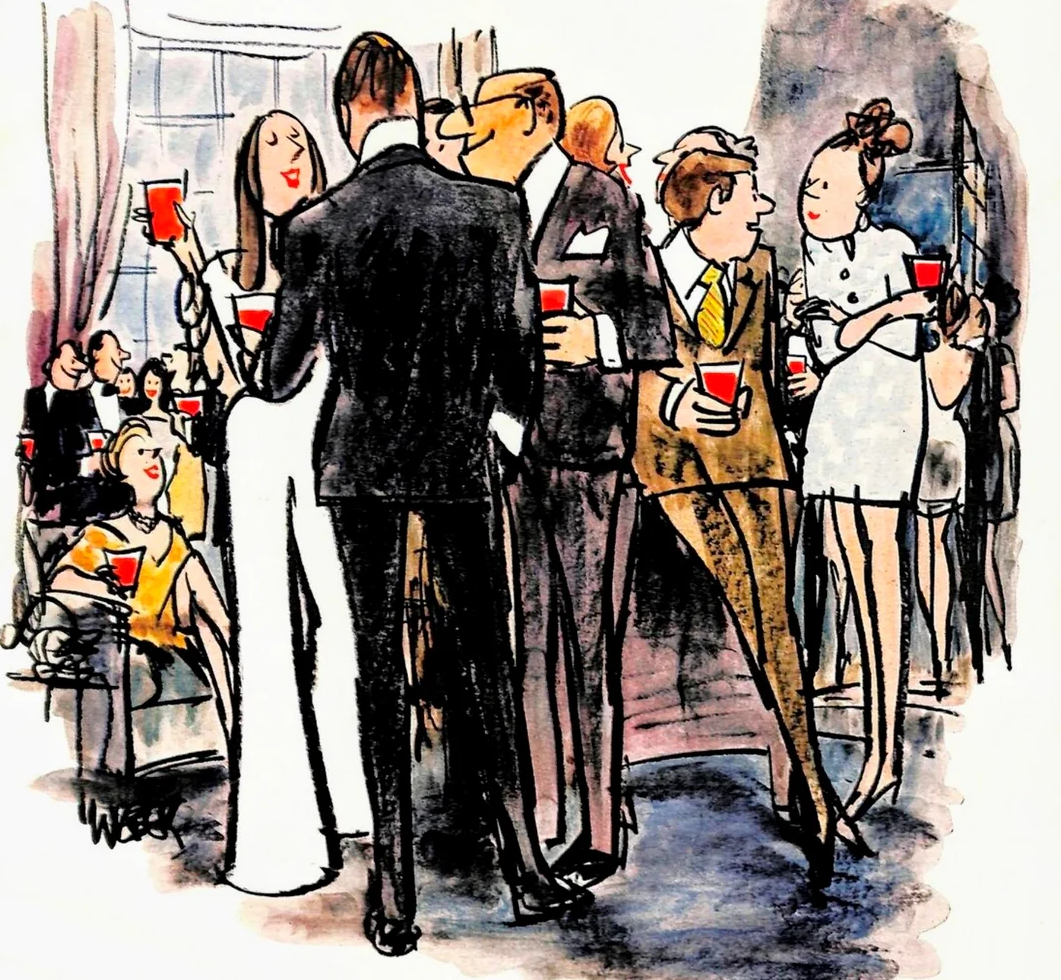Are you finding us from Worldcon?
Join us in Portal 55 (a great deal of DISCORD there…) for weekly broadcasts and perennial discussion!

By Mx Kris Vyas-Myall
Last month, I was so optimistic. Plans were afoot to expand the Graham Publishing SF magazines into three. First, as I touched on previously was to be Sword and Sorcery.
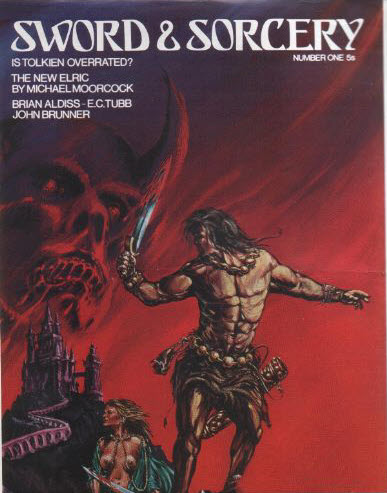
This was to be a fantasy-oriented magazine edited by Ken Bulmer, which already had a bunch of great names attached to its first issue, including Michael Moorcock, John Brunner and Brian W. Aldiss. This project went as far as to have proofs printed, some of which have been making their way around fan circles (if someone has one, I would appreciate a copy).
The other was a Walter Gillings-edited venture called Vanguard. This would have been a reprint magazine akin to Famous Science Fiction but with more focus on British and Australian authors, John Russell Fearn in particular.
However, Graham has decided to instead cut his losses and has pulled the entire venture. Therefore, not only are the other two projects stillborn, this is going to be the final ever issue of Vision of Tomorrow.
Just as with the various New Worlds problems, this untimely demise seems to owe more to behind-the-scenes issues than to the actual quality of the magazine. Firstly, the distribution problem. I buy direct in order to avoid any such difficulties, but most people rely on shops stocking the magazine. New English Library are supposed to be the distributor but I know that even determined fans have struggled to see a copy out in the wild.
There has also been the global paper cost rise. As economies have expanded throughout the prior decade, paper demand has skyrocketed. Unfortunately, you cannot easily just harvest more trees into wood pulp and expand the number of saws in a mill. The whole cycle of expanding the forest areas to be harvested can take decades. There have been experiments with faster growing materials and moving to storing of more records on microfiche, but these are in the early stages and unlikely to be instituted in newly industrializing countries around the world. This all means that the average cost of printing a magazine has gone through the roof, which has made new ventures very difficult.
Finally, there seems to have been some commotions behind the scenes. The associate editor was removed from his post a few months back and there are reports of disagreements over content and format between Graham and Harbottle. How much this impacted the overall fortunes of the magazine I cannot confidently to say, but it is hard to imagine it has made anything easier.
So let us all raise our glasses and toast to the final issue of Vision of Tomorrow, an underappreciated venture, and mourn for what could have been:
Vision of Tomorrow #12
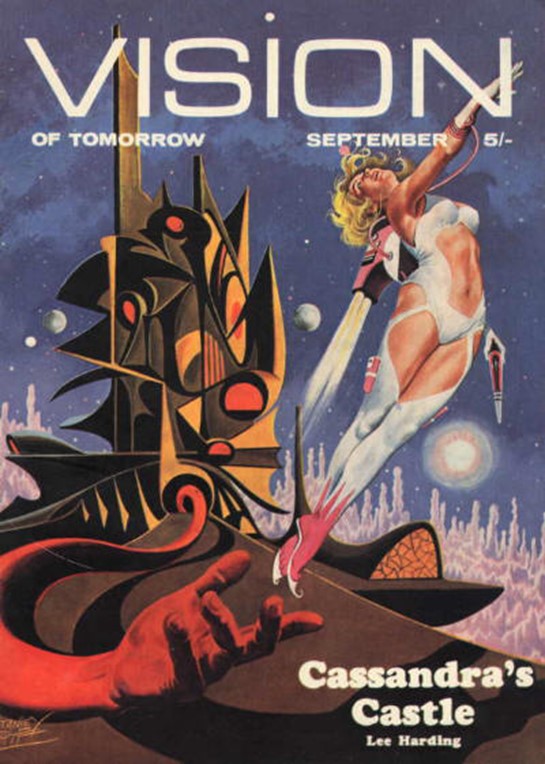
Cover by Stanley Pitt, and, to my eyes, the best they have done
Editorial: Respectable by Philip Harbottle
Harbottle decides to call out the main cause of the decline of British SF magazine publishing. What is it you ask? Rising costs? Distribution? Too much foreign and paperback competition?
No, it is televisual science fiction, and particularly Doctor Who, for being so bad that it has reduced the public’s standards and expectations.
Not even the slightest bit convinced myself but, if you want to rage at the BBC, Phil, get your anger out where you need to.
New Bottles, Old Wine by John Baxter
Baxter concludes his trilogy on the history of SF cinema by looking at what has happened in science fiction film in the latter half of the sixties, primarily in Europe.
It is not without interest but not without flaws either. It ends up feeling directionless in comparison to the earlier pieces, largely just being short reviews of films he has seen in the last 5 years. And whilst it is good to see him moving outside of America, I do feel there is some bias, for example dismissing most of Japanese cinema with the line:
Japanese Film-Makers have done little with Western Fantasy
Still, some good nuggets within.
Three Stars
Lalee by Norman A. Lazenby

Illustration by Eddie Jones
Salec Karn, second class Geological officer, a slave of Infinite Worlds Incorporated, arrives at Traject 23/04B. A fellow officer, Thorson, has smuggled Lalee Trell there. All contact with females is banned by Infinite Worlds, even birth is done by laboratory fertilization. Whilst Thorson is cocooned for his crime, Lalee escapes but is hidden by Salec. He finds he has fallen deeply in love with Lalee but she only wishes to escape to a better life and will use any means at her disposal to do so.
There are a lot of interesting ideas here, so it is a bit of a shame they are used in a vignette. I feel like every paragraph introduces a fascinating new concept. It almost feels like this could be the opening section to a novel about Lalee and Salec. There are a lot of descriptions of Lalee’s body but this at least make sense in this case given Salec’s confusion and arousal.
Perhaps my nostalgia for the end of the magazine is getting the better of me, but I will cross it over the boundary to Four Stars
Cassandra's Castle by Lee Harding
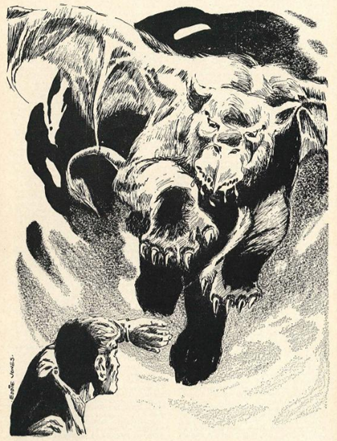
Illustration by Eddie Jones
Casandra is heir to the largest fortune the universe has ever seen. Conrad Rayner is an astrosculptor, a creator of planets and star systems. After three years of wooing her, they are married and travel to live at her castle, situated on a planet far away from galactic civilization. She has created a place that shifts reality around them and can suit all her whims. Conrad is to learn that there is a big difference between the pursuit of an ideal woman and the realities of marriage.
Some may find this all a bit too pat but I adored it. It takes a fairy tale style approach, with science fictional trappings, to explore relationships and the complexity of them. In particular how they fail through our own anxieties and self-doubts.
Five Stars
The Fauntleroy Syndrome by Brian N. Ball
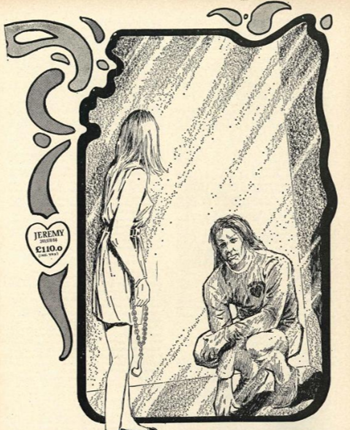
Illustration by Eddie Jones
After the two great "spermicidal wars" nearly wiped out humanity, a matriarchy was established. Sperm banks were developed to free women from needing men for conception and the Fauntleroy Syndrome is given to all men, a treatment to make them subservient and remove their aggressive traits.
At sixteen, Jenny is allowed to buy a man from the store. Her mother insists on her getting a sensible man called Charles but she keeps dreaming of the rebellious Jeremy.
I have seen these kind of anti-feminist stories emerging more and more recently and, even putting aside the ridiculous message that all women secretly want is a real man who treats them like an object, they are just predictable and dull. Here’s hoping they stop being published soon.
One Star
All the World's a Stage by Richard A. Gordon
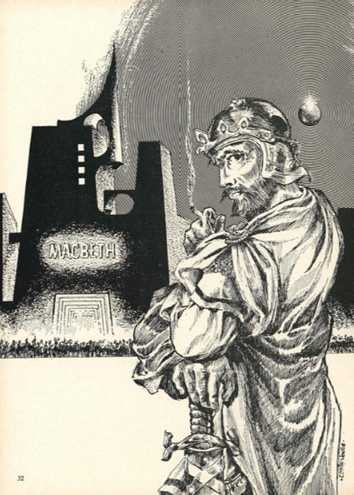
Illustration by Eddie Jones
Tudor Holdings Inc owns much of the country’s land and is responsible for the annual Shakespeare Festival. John Martin is a philosophy lecturer who hates how productions have become more graphic and violent. In fact, it is reported that thousands of people die in them each year. However, subliminal ads convince him, like others seen as undesirable, to sign up.
He is selected to play Macbeth but believes he may be able to find a loophole to allow him to survive the experience. But every player is imbued with the personality of their character to enhance the performance, and Martin may have trouble recalling he is not in fact a Scottish Monarch.
Dictatorship by the Royal Shakespeare Company seems more a premise I would expect to see in Monty Python’s Flying Circus than in an SF magazine, particularly in a story that tells it with such earnestness. I am also not sure what the point of it all is. There are hints of something to do with the nature of free-will and predestination, mirrored in Macbeth but it is all a little hazy.
I will give it points at least for originality, but I think it is best if we leave these kinds of Shakespearean explorations to Fritz Lieber.
Two stars
The Slitherers by John Russell Fearn
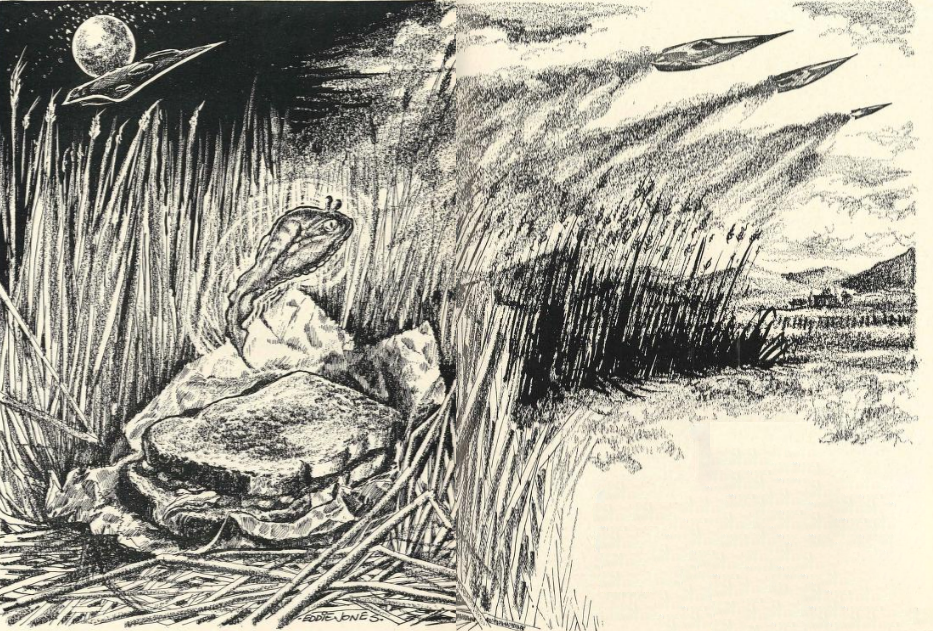
Illustration by Eddie Jones
And we conclude with our final story, which is, of course, another previously unpublished Fearn story (no details are given where it was dug up from this time but given the mention of “flying saucers” it must be either from the 50s or very late 40s).
In the early 21st century, a tourist in the English Countryside hears a tale from a publican. In his youth in the 1970s, the village of Coxwold saw wheat grow to gigantic size. However, around the crops emerged strange tadpole-like Slitherers, who move fast and suck out brain power like leeches. It is up to Hartley Norcross, chemist from the Ministry of Agriculture to discover a solution before the Earth is doomed.
I feel like this could have been a pretty efficient tale of technological paranoia, only Fearn bungles it. It is too long and drawn-out to be a creepy horror story, it lacks the good character work of Nigel Kneale or John Wyndham to be a domestic disaster piece, and he hasn’t got the scientific rigor of Michael Crichton to make hypothesis and experimentation interesting. It is more akin to a children’s TV serial, where you are screaming at your set for those involved to work out what was obvious half an hour ago.
I will, however, give him kudos for the twist in the tale, which has a nice Twilight Zone touch. I could in fact hear the final paragraph being narrated by Rod Serling in my head.
Two Stars
The Impatient Dreamers: The Birth of New Worlds by John Carnell
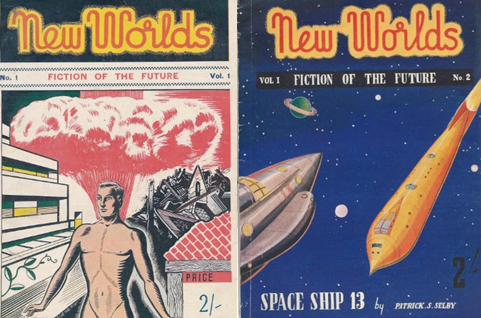
The first two issues of New Worlds, left cover by R. A. Wilkin, right by Victor Caesari
John Carnell tells the story of how he became editor of the revived New Worlds, the result of the curious serendipity of Carnell’s pre-war job being lost and author Frank Edward Arnold knowing an interested publisher.
I suppose there is something appropriate about this magazine (almost) ending with the starting point of Britain’s longest running SF magazine, essentially starting the era that is ending here: the quarter century of (more or less) continuous UK science fiction magazine publication. Lots of details on the behind-the-scenes hiccups, in particular how the publisher’s cheques kept bouncing.
Also, if you have been wondering how so many unpublished pieces of Fearn keep turning up, this piece helps highlight it. In response to the initial request for material for the new magazine, Fearn submitted half a million words worth, from which four vignettes were accepted to make up half the first issue. Say what you will about his quality, you cannot fault his typing speed.
Anyway, a fine end to a great series.
Five Stars
Mars: Not-So Friendly Neighbour? by David A. Hardy
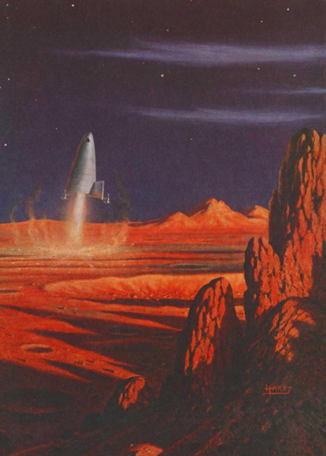
Illustration by David A. Hardy
And to finish off, Dr. Hardy provides an account of man’s knowledge of the Red Planet, what we know and what we have still to know.
A pretty good article, limited by length but still pretty interesting.
A high three stars
End of an Era
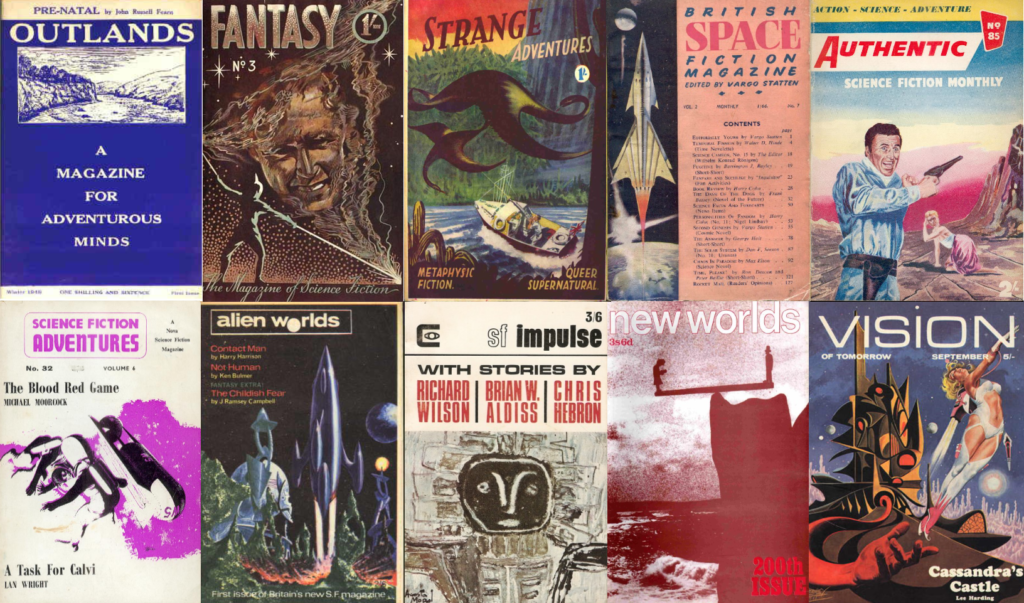
A selection of final (and in some cases only) issues of British SF Magazines from the post-1945 period
Now, for the first time since 1945, Britain is without a science fiction magazine and no new plans for one are on the horizon. From the struggles of post-war paper shortages, through the collapse of the magazine boom, to going begging to the arts council, the market managed to limp through for a quarter century. But all good things apparently have to come to an end.
The one bright spot is that the anthology market at least seems to be growing. Along with Carnell’s New Writings still going strong after so many years, it looks like New Worlds will be joining it, with an announcement the brand will be teaming up with an American publisher to produce a similar series of original anthologies. Maybe in a couple of years Vision will return in paperback form?
Either way, so long British (and Australian) magazines. Even at your most frustrating, you were still producing fascinating works and never stood still. We drink to your memory!

